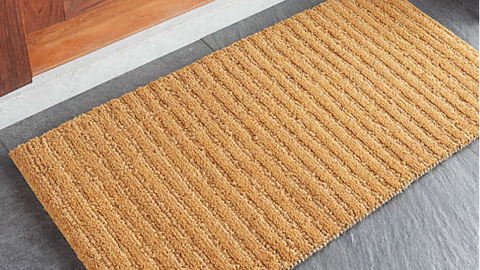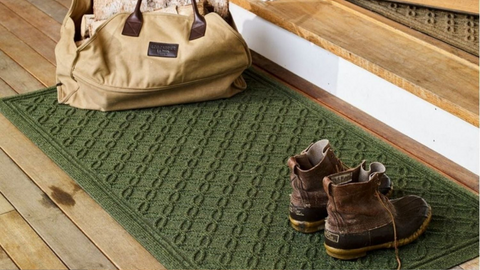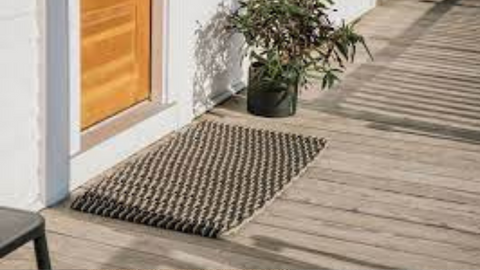What Type Of Doormat Is Best For Outside?
Did you know that over the course of a week, one square yard of high-quality carpets can collect half a kilo of dangerous dirt — twice as much in severe weather?
You're bringing in uninvited guests if you don't have an outdoor doormat as a gatekeeper, from dirt and debris to much worse, which can harm the air quality inside your home.
So it only makes sense to protect your home and your health with a heavy-duty outdoor mat.

Let us assist you in selecting the ideal welcome mat for your front door, taking into account materials, size, and even color.
Characteristics of the Best Outdoor Door Mats
- Outdoor doormats must be water-resistant. Your outside doormat will get wet whether you have a covered porch or not. Rain, snow, or just wet feet will be common occurrences, therefore your doormat must be quick-drying to last.
- Look for UV-resistant doormats: The best material for an outdoor doormat is one that has been UV-treated to prevent fading and damage from the sun.
- Select an outdoor doormat that has some weight to it. Because a lightweight doormat will not stay in place at your door, you will have to adjust it frequently. Because outdoor doormats receive so much foot activity, it's critical to choose one with weight and substance. A rubber outdoor mat pad can be used to secure it even more.
- Outdoor doormats should be simple to maintain. Outside doormats may need to be cleaned frequently because to the quantity of foot traffic they receive, as well as inclement weather. Take it easy on yourself and look for one that can be washed right outside your door with a garden hose.
- Your doormat must be mold and mildew resistant. Outdoor doormats, as previously said, are constantly damp. Mildew and mold thrive in wet doormats, so choose a doorstep that is resistant to fungal growth.
- Synthetic fibres are required for outdoor doormats. Your doormat should last for years, not just a season, regardless of the weather. Synthetic fibres outperform natural fibres because they are less likely to break down. The more natural fibres are exposed to the weather, the more they shed and degrade.

What Is The Best Material For A Outdoor Doormat?

Here are the most common outdoor doormat materials, along with their benefits and drawbacks:
Rubber Mats
It’s tough, durable, waterproof and flexible.
What are the disadvantages? Rubber gets extremely heated in the summer and might crack in the winter due to the cold. Rubber doormats, on the other hand, look best in industrial environments, so they tend to distract rather than enhance to a welcoming entrance.
Coir Doormats
The advantage of coir doormats is the wide selection of charming and hilarious doormats available in this design, which gives your door dcor a lot of adaptability.
Unfortunately, coir is readily broken down and sheds. They don't hold up well in harsh weather and quickly wear out. Rain, snow, sand, and sun can speed the decomposition of coir doormats, so you'll need to replace them frequently.
Fabric Doormats
Fabric or carpet doormats are available in a variety of styles, but if you plan to use it outside, be sure it is composed of synthetic fibres.
Natural fibre doormats are preferable for interior use; avoid using a cotton, wool, or cotton blend doormat outside.
Look for doormats made of cloth or carpet that have been designed specifically for outdoor usage and are quick to dry.
Synthetic Doormats
Synthetic material that won't break down in bad weather is the best choice for your front door mat.
There are many color and style options available in doormats woven from synthetic rope. While all synthetic rope options will last longer than natural fiber, the heavier-duty the rope the longer your doormat will last.







